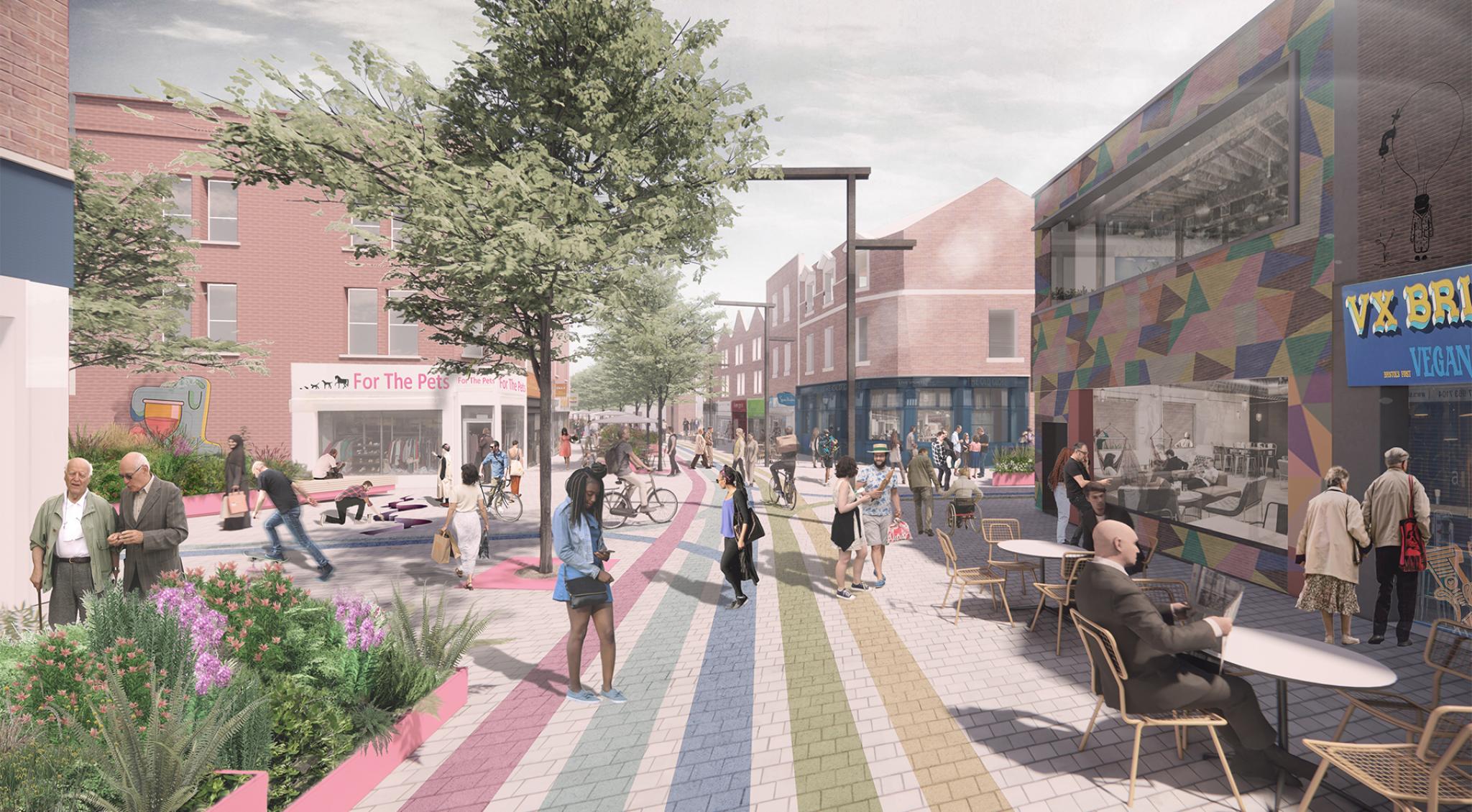BRISTOL’S EAST STREET APPROVED FOR TRANSFORMATION
The East Street Placemaking and Public Realm Masterplan is set to revitalise one of Bristol’s most historically significant high streets following the design’s approval by the seven client partners, including Bristol City Council and Bedminster BID.McGregor Coxall was commissioned to lead a multidisciplinary team in creating an adaptable public realm that restores the declining, vehicle-dominant space into a prosperous commercial, recreational, social, and ecological haven for Bristol.Emerging as a powerhouse of heavy industry and one of the region’s most prosperous streets, post-World War II planning efforts saw the area rebuild itself as a cornerstone for the community. Relocation of Bedminster’s industries, declining retail prospects, lack of investment, and unmeasured ramifications of COVID-19 has culminated in a dilapidated high street destination.The masterplan capitalises on Bedminster Green’s planned development, repositioning East Street as the focal point for an anticipated increase in the region’s student, residential and commercial populations.An engaging placemaking methodology laid the foundation for an inclusive design response, welcoming over 6,100 responses from community groups through the digital ‘East Street Vision’ website. Six placemaking strategies were determined to enhance East Street’s destination value, says McGregor Coxall Bristol Studio Director, Michael Cowdy.“Responding to climate change through increased urban greening, these strategies frame the vision by proposing people-friendly street initiatives, diversified business opportunities, local art-led projects and restoration treatments to reveal the street’s locally listed building heritage,” said Cowdy. “Containing a linear alignment of varying street tree species, biodiverse planting palette, nature-based drainage solutions, and green gateway arrival points, East Street can actively reduce urban heat island effects, create urban habitats for wildlife, and establish a more attractive, comfortable street environment for visitors.” Fundamental to achieving the vision is relocating bus services to Dalby Avenue, reconfigured service vehicle access via Dean Street, and integrated active transport connections supporting cycling. 326 bollards and obstructive street elements will be removed in the process.“These initiatives, alongside land use diversification and public realm activation, unlock East Street’s latent economic potential to support pop-up shops, exhibitions, meeting spaces, incubators, outdoor street uses and flexible day-night tenancies fit for a healthy day-night economy,” said Cowdy. A key focal point to the street is East Street Square. Located on the Cannon-and-East Street intersection, the multifunctional public space is “defined by an avenue of trees, integrated modular benches and planters, featuring a flexible platform for markets and other cultural gatherings,” said Cowdy.The space complements an enhanced collection of green pocket parks that provide natural shade, cycle parking, children’s play, and safe dwell space for community use.“I’d like to thank the communities and stakeholders who have and will continue to form an essential voice in the future of East Street,” said Cowdy.The project was made possible through collaboration and funding from Bedminster Business Improvement District
